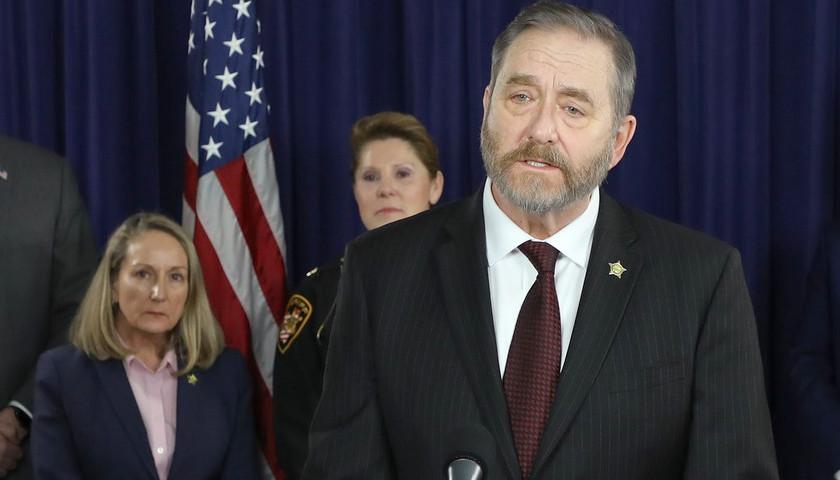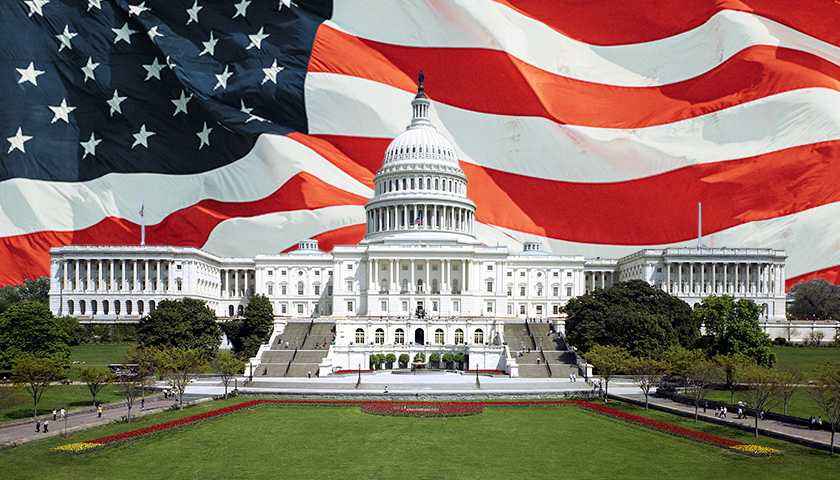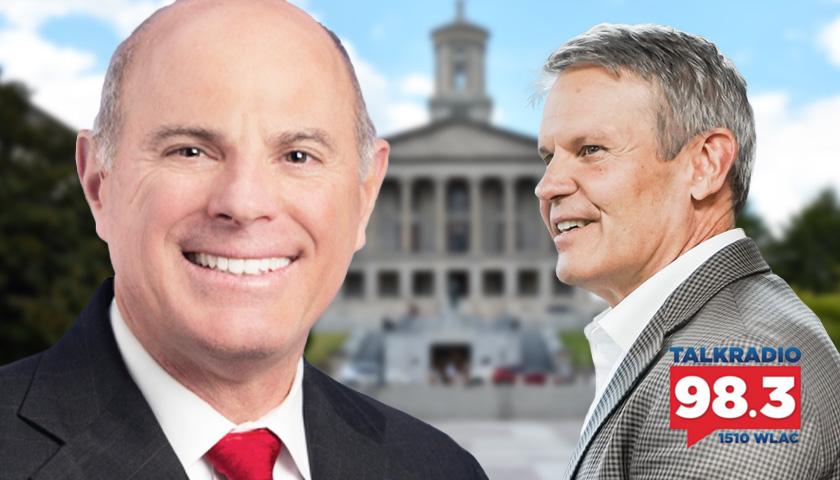This is the second part of the second of twenty-five weekly articles in The Tennessee Star’s Constitution Series. Students in grades 8 through 12 can sign up here to participate in The Tennessee Star’s Constitution Bee, which will be held on September 23.
Federalism is a foundational concept framed in the Constitution of the United States which defines the relationship between the national government and each of the state governments that comprise our republic (thirteen such state governments in 1789, fifty now in 2017).

Both entities–the national government and each state government–remain sovereign, while the powers of governance and responsibilities to the citizenry are balanced between the two. Federalism, along with The Separation of Powers within the national government (which we will discuss in tomorrow’s article) are the two foundational concepts of the Constitution that protect the freedoms and liberties guaranteed to individual citizens.
“In the compound republic of America, the power surrendered by the people is first divided between two distinct governments, and then the portion allotted to each subdivided among distinct and separate departments,” James Madison, probably, or Alexander Hamilton, possibly, wrote of “the federal system of America” in Federalist Paper #51, one of the famous series of essays written after the Constitutional Convention designed to persuade the thirteen separate states to ratify it.
“Hence a double security arises to the rights of the people. The different governments will control each other, at the same time that each will be controlled by itself,” they concluded.

While revising the Articles of Confederation, delegates to the Constitutional Convention finally confronted the proper role of the states, the constitutional branch of government closest to the people being governed.
Though the document that emerged from the convention increased the powers of the national government, which were virtually non-existent under the Articles of Confederation, the complete agreement which defined that relationship was not finalized until the Tenth Amendment, the last amendment in the Bill of Rights, was ratified on December 15, 1791, just three years after the Constitution was ratified and two years after the national government was formed.
And it is the 28 simple words of the Tenth Amendment which defines federalism for us:
The powers not delegated to the United States by the Constitution, nor prohibited by it to the States, are reserved to the States respectively, or to the people.
When considering the “original agreement” of the Constitution, those first ten amendments must be considered part of the deal, because several states–Massachusetts being the most prominent–agreed to ratify the Constitution only on the solemn promise of proponents that the first Congress convened under the new government would add that Bill of Rights.
The motivation behind the 10th Amendment, as expressed vehemently during the debates held during the ratification conventions in the thirteen states, was to ensure that power didn’t become centralized in the national government. It was the same notion of “checks and balances” that had been the driving force behind James Madison’s original outline for the Constitution that was so influential at the Constitutional Convention in Philadelphia.
“The Constitution that was actually enacted and formally amended creates islands of government powers in a sea of liberty,” Georgetown Law Professor Randy Barnett wrote in his 2004 book Restoring The Lost Constitution: The Presumption of Liberty.

Those government powers were balanced between the national government and the state governments.
“To better secure the natural rights of the sovereign people, the power of the national government was limited to those ‘herein granted’ in the written Constitution,” Barnett wrote in his most recent book, Our Republican Constitution: Securing the Liberty and Sovereignty of We the People.

Under the Federalism defined in the Constitution, the national government has 33 specific limited and enumerated powers “herein granted” to its three separate branches.
Article I, Section 8 of the Constitution enumerates 19 specific powers granted to the legislative branch of the national government, one of the most important of which is the “Power to lay and collect Taxes, Duties, Imposts, and Excises.”
Article II, Sections 2 and 3 of the Constitution enumerates 13 specific powers granted to the executive branch of the national government, the most significant of which states that “The President shall be Commander in Chief of the Army and Navy of the United States, and of the Militia of the several States.”
Article III, Section 2 of the Constitution enumerates one specific power granted to the judicial branch of the national government: “The judicial Power shall extend to all Cases, in Law and Equity, arising under this Constitution, the Laws of the United States, and Treaties made, or which shall be made, under their Authority.”
It also defines 8 specific types of cases to which the judicial power of the judicial branch of the national government shall apply.
In tomorrow’s article on The Separation of Powers, we’ll explain how the Founding Fathers designed these three separate branches of the national government to provide “checks and balances” so that no one of the three branches would obtain powers so great as to make it capable of abusing those powers.
Here is the big important news about the foundational concept of Federalism within the United States Constitution:
Any powers other than these 33 enumerated powers specifically given to the national government’s three branches as identified above “are reserved to the States respectively, or to the people,” as the Tenth Amendment makes so clear.
You may note that we have been careful in this article to use the term “national government” rather than “federal government.”
This is intentional.
While it has been common practice for many years to refer to the “national government” as the “federal government,” this terminology leads to a great deal of confusion when it comes to understanding what the foundational concept of Federalism defined in the Constitution really means.
As the national government has extended its powers, particularly in the last century, far beyond the very limited scope defined in the Constitution, some people are under the misimpression that Federalism means the supremacy of the national or federal government over the state governments.
Similarly, the labeling of the different groups who debated the Constitution during the ratification process has added to the confusion surrounding the true meaning of Federalism.
Those who were most insistent on the inclusion of the Bill of Rights and the Tenth Amendment into the Constitution–like James Monroe and Patrick Henry in Virginia, and Samuel Adams in Massachusetts– were called “Anti-Federalists” while those who were initially resistant to the need for a Bill of Rights–and in this category we include both Alexander Hamilton and James Madison (the latter of whom subsequently experienced such a transformation during his successful 1789 campaign to win a seat in the House of Representatives that he ultimately became the legislative champion of the Bill of Rights)–were called “Federalists.”

So, it was really the “Anti-Federalists” who were ultimately responsible for the final form of Federalism incorporated in the Constitution and the Bill of Rights.
Finally, there is the Federalist Party, the first political party in America. It was in existence from about 1792 until 1816, and it advanced policies that were often at odds with the foundational constitutional concept of Federalism.
It consisted of business and banking interests who supported the economic policies of Alexander Hamilton, the first Secretary of Treasury. Hamilton supported a national bank and the notion that the Constitution provided “implied powers” to the national government, a notion that the quickly formed second national party, the Democratic-Republicans, led by Thomas Jefferson and James Madison vigorously disputed.
A great deal has happened in the 226 years since the Tenth Amendment was ratified, and most of it has advanced the power of the national government at the expense of state governments and individual citizens.
“Since the adoption of the Constitution, courts have eliminated clause after clause that interfered with the exercise of government power,” Georgetown Law Professor Barnett wrote in his 2004 book.
The result is just the opposite of what the Founding Fathers intended when they made Federalism one of the foundational principles of the Constitution.
“The judicially redacted constitution creates islands of liberty rights in a sea of governmental powers,” Barnett concluded.
What do you think?
Is it time to restore the foundational concept of Federalism the Founding Fathers installed within our Constitution to the operation of our national and state governments in 2017 and beyond?
And if it is, what specifically can be done to accomplish that?
In tomorrow’s article, we will talk about The Separation of Powers.










[…] Federalism and The Separation of Powers are the two foundational concepts framed in the United States Constitution which, together, were designed to protect the liberties and natural rights of individual citizens. […]
[…] and the citizens of those states, to form a government guided by the foundational principles of Federalism and the Separation of Powers as defined in the Constitution and the Bill of […]
[…] Federalism, as we explained earlier in this series, “defines the relationship between the national government and each of the state governments that comprise our republic. Both entities–the national government and each state government–remain sovereign, while the powers of governance and responsibilities to the citizenry are balanced between the two.” And it was the Tenth Amendment, ratified in 1791 and part of the original constitutional “compact” or “covenant” between the states and the national government upon which our republic was organized: […]
[…] Federalism […]